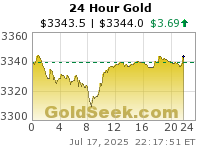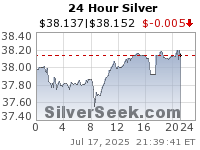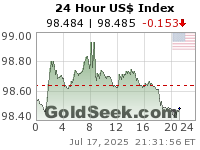EXPECTED TRADING RANGE
GOLD FEBRUARY 08 -- $792.0 -- $823.00
I am riding on a “Dune Buggy” as far as movements in the markets are concerned. One day sharp rise, followed by a sharp fall only to recover the next day. This kind of movement has resulted in more and more traders becoming short term oriented and is preventing them from taking a medium term view. However the US dollar has been the catalyst for all the volatility. A weaker dollar results in higher crude oil prices, which in turn supports precious metals and vice-versa. There are still huge short positions in US dollar and positive news like sharp rise November US retail sales resulted in some of the US dollar shorts getting squared off and the subsequent effect on precious metals and energies. The sharp rise in PPI is also due to lower base effect which is continue to affect PPI prices in the first quarter of 2008 as crude oil prices were lower in the first quarter of 2007. If December retail sales perform like November markets will soon be reducing the possibility of a Fed rate cut in January also.
Technical picture gold is bullish. However gold can fall $30 and still maintain the bullish trend intact. However it a momentum markets technical trade is applicable only when key supports are tested. Silver is in the woods and a lower close today will alter the technical picture to short term bearish.
NYMEX CRUDE OIL -- FUTURE
Back to square one as it targets $100 once again. On the lower side as long as $90.40 holds, downside will be limited.
Labels: Analysis
The expected surprise came a day after as the Fed, European Central Bank, Bank of England, Bank of Canada, and Swiss National Bank all released plans to provide extra liquidity to money markets, auctioning off loans with comparatively low interest rates to ease tension in global money markets. This is an acknowledgement that their economies are in tatter. Base metals and equities will benefit more out this move than precious metals and energies. Base metals have taken the maximum thrash due to year-end liquidity pressures and they should benefit most. The fall in base metals over the past two months suggests the quantum of speculative interest. Retail investors should learn a thing or two from the slide in base metals.
Nothing new to comment on precious metals and base metals as they are expected to remain firm on the back of a weaker US dollar and higher crude oil prices. Technical charts in precious metals and energies are yet to show bearish divergence. Higher gold prices will not result in lower demand.
As long as gold holds $807-$809 it will target $825 and $838. Only a consolidated fall below $807 will result in $802 and $790.70.
Labels: Analysis
Nothing Official about precious metals and energies sharp rise after the Bank of England interest rate cut. I am more concerned about the plunge in base metals particularly lead, which fell nearly six percent. There was a technical breakdown in LME Lead 3 month, which resulted in the same closing at $2680. LME Lead 3 month has to hold $2356 else more losses will come. The fall prompted investors to exit lead and subsequent built in short positions. Technically lead is highly oversold but there could be more losses before a consolidation and next leg higher. Year to date returns in lead is still the highest among all the base metals at nearly forty percent so the fall in lead prices is nothing but year-end profit taking.
I will remember 2007 more for the fall in base metals and rise in crude oil prices. At the beginning of the year crude oil and copper prices plunged. Thereafter in towards the close of May Nickel prices plunged. From October and so far in December almost all the base metals fell but Zinc and Lead are the attractions. Base metals trading in new India is growing day by day. I find more and more investors preferring to trade in base metals in India than gold and silver, as they are a source of very high risk and very high return. Even I like to trade in base metals for intra day. I prefer gold and silver for investment purpose, which if invested at the right time gives maximum return. Base metals trading will only rise in India over the next few years. But once again high volatility in base metals is here to stay and one should determine his risk appetite before going long.
Only a break of $818.30 will result in gains to $835.50 and $855. On the lower side as long as $797.90 and $790.30 are holding downside will be limited.
Labels: Analysis
NEW YORK (MarketWatch) -- Gold futures extended their decline on Thursday, coming under pressure amid falling crude-oil prices and firmness in the U.S. dollar.
Gold for February delivery dropped $9.70 at $794 an ounce on the New York Mercantile Exchange. Other metals prices also traded lower.
On Wednesday, gold futures dropped $3.90 to finish at $803.70.
"With both oil and the dollar beginning to reverse their trends as year-end profit taking emerges, it looks as if gold will continue to see pockets of pressure," said James Moore, an analyst at TheBullionDesk.com, in research note.
"However, we don't expect gold to drop significantly lower as scaled down buying emerges from the physical sector, while the sensitivity in the credit/sub-prime issues continues to draw investment demand," he said.
The dollar index, which tracks the performance of the greenback against a basket of other major currencies, rose 0.4% at 76.710.
"The U.S. dollar is firm on improved technicals and improved U.S. fundamentals that have damped speculation of a 50 basis point Fed rate cut next week," said analysts at Brown Brothers Harriman in a research note.
Crude-oil futures fell 78 cents to $86.71 a barrel in electronic trading on the Nymex. On Wednesday, crude-oil futures erased earlier gains and closed lower after a government report showed U.S. crude inventories slumped 8 million barrels to the lowest in nearly three years, but heating oil and gasoline inventories increased unexpectedly.
Also on Nymex on Thursday, March silver fell 25.50 cents at $14.205 an ounce, January platinum dropped $7.30 at $1,461 an ounce and March palladium declined $4.45 to $350 an ounce.
December copper edged down 2 cents at $2.9960 a pound.
Gold warehouse inventories declined by 30,159 troy ounces to stand at 7.4 million troy ounces as of late Wednesday, according to Nymex data.
Silver stockpiles fell by 57,664 troy ounces to 134 million troy ounces and copper supplies edged down 225 short tons to 17,743 short tons.
Labels: News
The gold price is set for a period of consolidation following profit taking and position squaring, while the state of credit markets remains important.
The recent correction in the gold price has been more a function of profit taking and position squaring than a function of the state of the credit markets. After testing $830 in the final week of October, gold then retreated towards $770 before bouncing slightly as speculative positions were closed. This was extended by selling in relation to the options markets when the November options went off the board, as there has been sizeable exposure at both $800 and $850. It is arguable therefore, that a lot of speculative froth has been blown off the market and that the ground is being laid for a recovery, but this may yet take a little while to develop. The prognosis is positive for the New Year, but with the year-end approaching there is a distinct possibility that there is more position cutting to be done. There is increasing resistance at $800, both on a psychological and technical basis.
Gold's most recent retreat coincided with a reduction in the CboE VIX uncertainty index over the last week of November from just less than 29 to just below 23, coupled with a very impressive rally in the equity markets. The S+P 500 and the Dow Jones both gained 5% in the last week of November, while the FTSE 100 and the Nikkei rallied by 4%. This is partly because Mr. Donald Kohn, the Vice-Chairman of the Federal Reserve, has strongly suggested that there will be another rate cut from the FOMC in December following the combined 75 point reduction that the Committee has put in place since late September. Dr. Kohn said in late November that recent turbulence in the markets might mean that the restriction on credit availability, both in the corporate sector and with respect to private individuals, might be greater than previously imagined and that the risks to economic growth had increased. The fed funds futures markets are now pricing in more than a 90% probability of another cut in rates on 11th December, taking the fed funds target rate to 4.25%.
These markets were then boosted further when Dr. Bernanke noted that the economic outlook had been "importantly affected" by the problems in the credit markets and that the economic data to be released in the early days of December might well contain the answer as to whether the FOMC should cut rates or not. He focused particularly on the November non-farm payroll figures, which are due for release on 7th December; the markets are looking for an increase of approximately 100,000.
He commented that the "fresh wave of investor concern has contributed in recent weeks to a decline in equity values, a widening of risk spreads for many credit products not only those related to housing and increased short-term funding pressures [and that] these developments have resulted in a further tightening in financial conditions, which has the potential to impose additional restraint on activity in housing markets and in other credit-sensitive sectors". He remains, however, concerned about inflation, citing food and energy prices and the low level of the dollar. Furthermore he noted that US household spending in recent weeks has been soft.
Dr. Bernanke took a neutral stance on the prognosis for the 11th December meeting, but the markets were prepared to take his comments as an indication that a cut might well be in the offing. It is arguable that the increase in equity values is not sustainable as there is still a clear investor aversion to risk, and this should benefit gold. There is a general consensus that there is still some way before the credit crunch has been resolved, although a senior official at the European Central Bank has suggested that the markets are pricing in a resolution by next spring. If the system has not recovered by then, therefore, gold is likely to be a major beneficiary as a hedge against financial risk. At the moment, however it looks as if the most likely beneficiary of the prevailing circumstances will be the bond markets as gold still has a strong speculative element to it and there is not much sign yet of any resurgence in activity in the price-elastic regional buying areas of the Middle East, Asia and the Indian Sub-continent. Recent figures form the CFTC combined with an analysis of open interest on COMEX suggests, however, that American commercial buyers are back in the market.
The state of the credit markets remain important with respect to gold, as it reasserts itself as hedge against risk. Without the return of jewellery and investor buyers at the grass roots level, however, any additional strength in the price is likely to be built on foundations of sand. The buyers will return once they are comfortable with the stability of the market. The most constructive near-term development, therefore, is a period of consolidation.
Labels: Analysis



